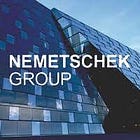Nemetschek: Fundamentals and Valuation
A long history of outsized returns (30% total return CAGR) by organic growth in software and bolt-on M&A
Nemetschek has been a monster over the last ten and twenty years, generating a 31% total return CAGR and massively outperforming all indices. However, like many software businesses, the company has yet to reclaim its 2021 bubble peak. Let’s review Nemetschek’s fundamentals and find out why it has performed this way and what the future might look like.
Growth and SaaS transition
Nemetschek operates in the fast-growing industry [here details again on growth rates of the industry and refer to the advantages of software solutions in this underdeveloped space]
Nemetschek has grown tremendously over the last decade, growing revenue by 15%. We can see that this growth was predominantly driven by recurring revenues (21% CAGR). Consulting & Hardware has grown fast at 13% but just represents a small percentage of sales at 4%. Software and Licenses started to decline in 2021 and the company started to be aggressive about discontinuing these services and pushing SaaS models over time in 2023. Recurring revenues now account for 85% of sales, making the transition almost complete.

Nemetschek had to gradually phase out licenses so as not to drop revenues too quickly and to anger customers. The problem with a SaaS transition is that you’re changing from full payments to monthly/annual smaller payments over an indefinite time. This increases the lifetime value of a customer if he can be retained for a long time, but it reduces revenue in year 1. Revenue visibility is increased because there are no upgrade cycles anymore where companies purchase the new version of the software license but instead get the latest updates as soon as they are released and as part of their subscription. Nemetschek, in 2022, expected that the SaaS transition would impact revenues and margins in the short term but elevate both over time. Margins, however, shouldn’t drop below 20% EBITDA and should start rising again at 90-95% recurring revenues. This turned out to be accurate and margins bottomed at 23.85% in 2023, rising to 26.35% LTM. Long-term Nemetschek targets EBITDA margins in the mid-30s. One thing to note is that Nemetschek reports under IRFS and not GAAP. That’s why the gross margin looks so underwhelming for a SaaS business, with most American counterparts enjoying >80% gross margins, like Autodesk (91%) or PTC (79%). IRFS subtracts personnel expense from revenue, while GAAP subtracts it after gross profit.
Ready for More?
By becoming a paying subscriber, you can read the rest of this article and all of my writing on businesses, valuations and investing. Don't miss out on the opportunity!
Subscribe now and get 15% off your first year using the code below:






